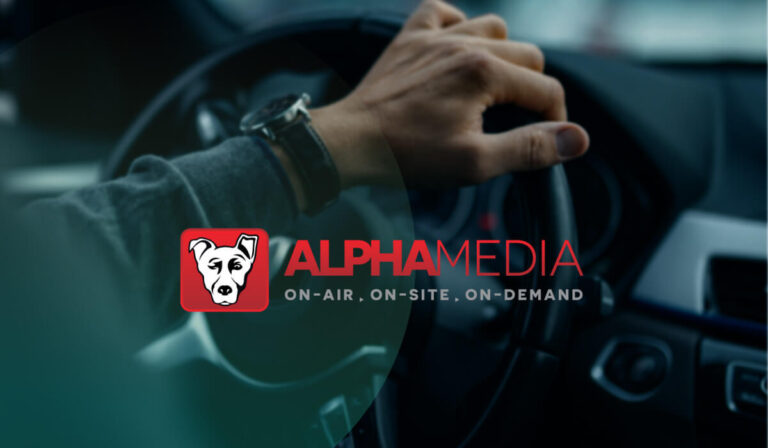For decades, the Automotive industry has viewed online metrics as an important measure of marketing success. Eager to validate their online investment, auto marketers have prioritized tactics like Cost Per Action (CPA), including click-to-call and clicks to manufacturer websites, even though these tactics don’t result in a dealer visit.
And for that reason alone, there’s a huge problem with this approach: online metrics aren’t effective when it comes to impacting an Auto brands bottom line. The vast majority of consumers buy a car through an in-store visit, and online metrics aren’t optimized for driving offline actions like talking to a salesperson or booking a test drive.
As noted in our first Auto report, car shoppers make just 2.2 visits to a dealership before a purchase, and those are often to the same Auto brand. By the time consumers “click”, they’ve likely already completed their competitive research and made their choice. What’s more, optimizing for website visits makes marketers more reliant on non-strategic tactics like proximity targeting, trying to reach people as they are at or around businesses and points of interests. Our research shows that while this form of optimization can drive down CPAs to an average of $3, it increases the Cost Per Visit to an average of $10, thus raising the price of acquiring a customer overall.
By sticking to this conventional strategy, Auto brands are in essence optimizing themselves out of visits that could result in real-world sales. Here’s a look at how shifting the focus to dealership visits with the help of location targeting can get Auto marketers back on track.
The Auto Sales Solution: Location Services
Consumer dependence on mobile devices, coupled with the growth of location services, means Auto brands have a new way to track whether their campaigns are effective. That’s important, because GroundTruth’s research into online metrics like Click-Through Rates has found there’s often no correlation between CTRs and in-store visits.
The same can be said for Cost Per Action. Our analysis of campaigns that optimized for CTR and CPA metrics revealed that higher CTRs and lower CPAs resulted in fewer on-lot visits. Even looking back to visits that occurred within the two previous weeks, this pattern was found across all US regions regardless of banner creative.
What this indicates is that Cost Per Action and Click-Through Rate performance hit their peak while visitation is low. In other words, while online performance may appear to be positive, it isn’t having a positive impact on dealership visits — the metric that matters the most.
As Cost Per Action decreases, the cost to drive a visit on-lot increases. Note: R² of CPA data is 0.55, R² of Visit data is 0.70, and R² of CPV data is 0.66.
When you take full advantage of location-based targeting, it’s a different story. Increasing your spend on “location-predictive” products — algorithmic products based on past real-world visitation behavior — correlates with driving in-store visits at a rate 2.6 times greater than proximity-based products. That means it’s 2.6 times less expensive to drive a visit if you use strategic location targeting.
It’s also worth noting that while such “location predictive” products, such as Audiences and Audience re-targeting, had a slightly higher CPA than most proximity-based products, they were actually 4 times more cost-effective at generating a visit.
Location predictive products drove 11.3% more total visits with less ad spend compared to proximity.
Rethinking Optimization
By optimizing for CPA, the Automotive industry has put the onus on sites to deliver sales results. Tactics like proximity targeting have their place, but when it comes to generating dealership visits and positively impacting your bottom line, location targeting is proving to be the better choice. In a recent campaign for a top Luxury Auto brand, location-predictive targeting was used to target lifestyle audiences such as Luxury Retailers, Art and Culture Enthusiasts, and select location behaviors that aligned with the brand’s core audience attributes. Along with building awareness amongst a relevant audience, this approach was simultaneously effective in driving a significant number of visits to the dealership, 40% of which were a direct result of GroundTruth’s Neighborhoods and Behavioral Audience targeting.
Due to the inverse relationship in these outcomes, our immediate recommendation would be to segment automotive strategies—utilize proximity-based products for efficient CPA KPIs and strategic location-predictive products to drive offline visitation.
What’s our long term recommendation to influence sales and business growth in the automotive category? Think visits. It’s through visits that you’ll get people in front of your sales force, into a car for a test drive, and signing a deal. Even recently, Oracle Data Cloud published a white paper on improving auto sales. It noted that for many Automotive brands, only about 25% of their customers visit their site or app prior to making a purchase. So instead of optimizing your entire digital campaigns for site visits in the hope of securing a qualified lead, try using location data to drive real-world visits that produce real-world results.
Methodology
We analyzed mobile ad data from a 6-month span (April 1 to October 4, 2017) and compared fluctuations in online KPIs to real-world visits at 377 car dealerships across the United States. Customers that were shown the ad were measured for 2-weeks afterward to see if they would visit the brand displayed in the ad. Customers were shown both Rich Media and Standard banners. All impressions, clicks, online conversions, and spend were recorded through DoubleClick, and real-world visits were observed by the third-party accredited GroundTruth. Definitions of these metrics can be found in the index.
Index
Click-Through Rate: The percentage at which a user sees and clicks on an ad. (Clicks/Impressions)
Conversion/Action: Any action on the brand’s website, after clicking on the ad banner. Measured by pixels placed on the site.
Cost Per Action: The average dollar amount it takes to drive one website interaction beyond the ad. (User clicks ad, then clicks anywhere on the brand’s webpage. Calculated by Media Spend/Actions.)
Cost Per Visit: The average dollar amount it takes to drive one unique real-world visitor. Once a user sees a mobile ad, they are given a two week window to visit a dealership. (Calculated by media spend/Unique Visits.)
Neighborhoods targeting: GroundTruth Neighborhoods represents areas which show high visitation affinity with a brand’s store or a set of audiences. They are 100% automated and derived from GroundTruth’s Blueprint technology. Neighborhoods enables marketers to garner substantial insight on their consumers and can also be leveraged as a targeting tactic to engage existing and new consumers.
Behavioral Audience targeting: GroundTruth utilizes the power of Blueprints to create audiences based on real-world location indicators and demographic information derived from visitation patterns.
Analysis by Eric Bechtel, Campaign Manager, Ad Operations at GroundTruth





